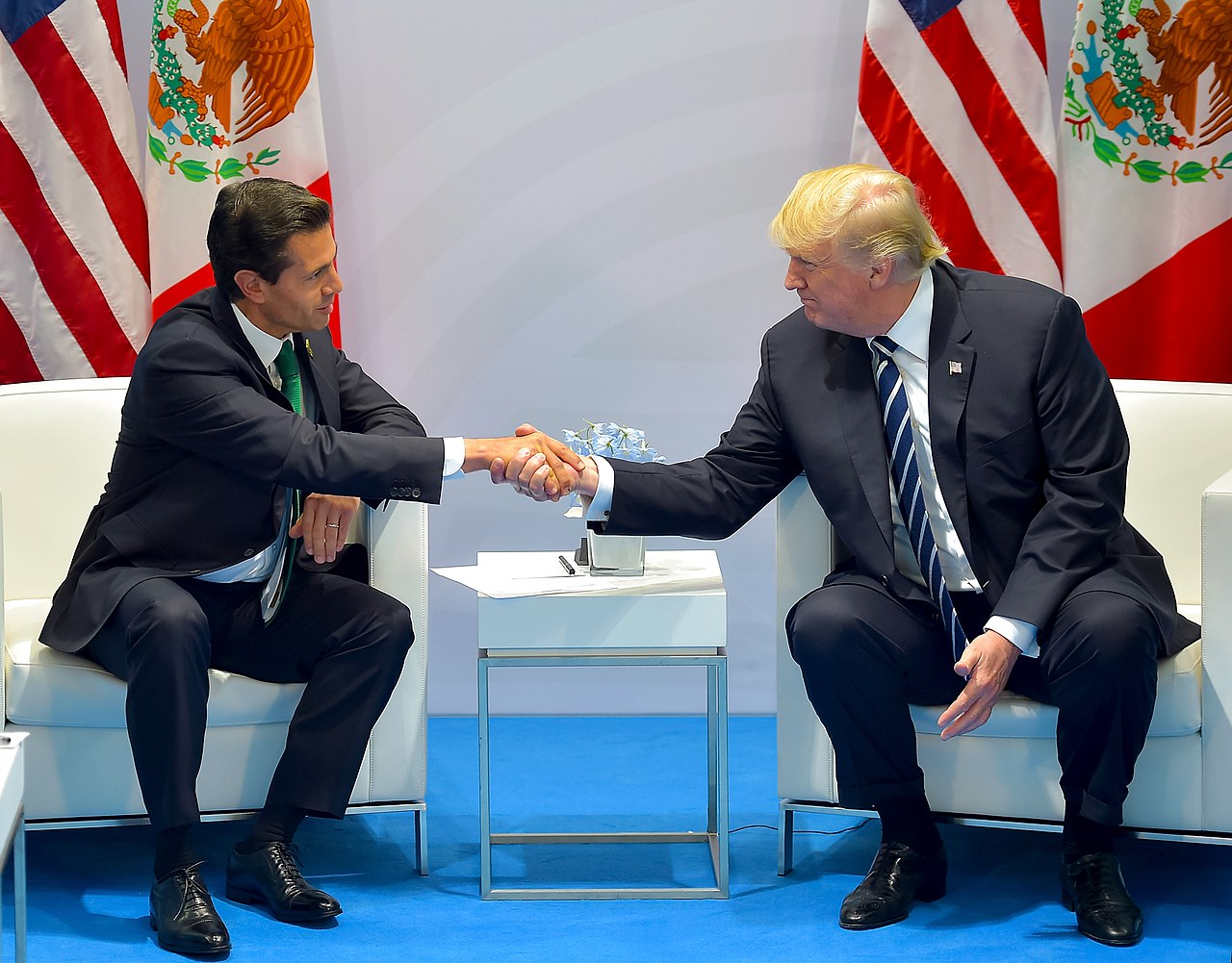The IHR Library holds a wealth of resources for the history of Mexico-United States relations, covering the period succeeding the Mexican-American War up until the twentieth century. A range of sources, such as, treaties, diaries, autobiographies and letters, are included in English, Spanish, Portuguese and other languages.
Read previous entries in this blog series:

2/13/1988 President Reagan reviewing troops with President de la Madrid at the Camino Real Hotel landing zone in Mazatlan Mexico
Following the ongoing reclassification project for the Latin American collection and the upcoming Mexico-U.S exhibition, some interesting volumes have been discovered within the library’s holdings. This is the final blog post in a series that focused on the IHR Library’s holdings of material concerning the history of Mexico-U.S relations, with a focus on Mexico-U.S foreign relations since 1945.
The alliance between Mexico and the U.S. during World War II brought the two countries into a far more harmonious relationship with one another. Mexican President Manuel Avila Camacho met in person with both Franklin Delano Roosevelt and Harry S. Truman, helping to cement ties with the U.S. Avila Camacho was not a leader in the Mexican Revolution himself, and held opinions that were pro-business and pro-religious that were more congenial to the U.S. while he maintained revolutionary rhetoric. During Avila Camacho’s visit with Truman near the centenary of the Mexican–American War, Truman returned some of the Mexican banners captured by the United States in the conflict and praised the military cadets who died defending Mexico City during the invasion.
The end of World War II meant decreased U.S demand for Mexican labour via the Bracero Program and for Mexican raw materials to fuel a major war. For Mexican labourers and Mexican exporters, there were fewer economic opportunities. However, while at the same time the government’s coffers were full and aided post-war industrialisation. In 1946, the dominant political party changed its name to the Institutional Revolutionary Party, and while maintaining revolutionary rhetoric, in fact embarked on industrialisation that straddled the line between nationalist and pro-business policies. Mexico supported U.S. policies in the Cold War and did not challenge U.S. intervention in Guatemala that ousted leftist president Jacobo Arbenz.
The IHR Library’s holdings on the history of Mexico-U.S relations is particularly strong from the period between Mexican independence, up until the Cold War. There are a number of electronic resources available that focus on the more contemporary period after the Cold War.
The first work being highlighted in this post is Foreign relations of the United States, 1955-1957. vol. 6 American Republics: Multilateral; Mexico; Caribbean – United States Department of State
This work is one of 27 volumes that the IHR library holds of the publication, Foreign Relations of the United States. The volumes in this series include documents that give a comprehensive record of the major foreign policy decisions of the United States together with appropriate materials concerning the facts which contributed to the formulation of policies.
The section of this volume that concerns Mexico relations focuses on the political and economic relations of the United States and Mexico from 1955 to 1957. Notable documents in this volume include letters from President Eisenhower to the Secretary of State and other government officials and a National Intelligence Estimate; a report that aimed to estimate the situation and probable developments in Mexico over the next few years.
The Mexico reader : history, culture, politics – edited by Gilbert M. Joseph and Timothy J. Henderson.

The Mexico Reader explores what it means to be Mexican, tracing the history of Mexico from pre-Columbian times through the country’s revolution (1910–20) to the present day. The materials relating to the latter half of the twentieth century focus on the contradictions and costs of post-revolutionary modernisation, the rise of civil society, and the dynamic cross-cultural zone marked by the two thousand-mile Mexico-U.S. border. The book is divided into several sections organised roughly in chronological order and brief historical contexts have been provided for each section. This work also contains a lengthy list of resources about Mexico, including websites and suggestions for further reading.
The United States is a major presence throughout this work and it acknowledges how U.S actors and agencies have shaped Mexico. The chapter titled ‘The Border and Beyond’ addresses several issues surrounding the Mexico-U.S border; the permeability of the border, problems for law enforcement and environmental and social policy issues.
Two nations indivisible: Mexico, the United States, and the road ahead by Shannon K. O’Neil.
The IHR library holds a digital copy of this Council of Foreign Relations publication. Shannon K. O’Neil, a senior CFR fellow for Latin American Studies, argues that the U.S ought to forge a new relationship with its southern neighbour. She maintains that there is more to the narrative conveyed by the American media that Mexico is a dangerous place overrun by drug lords.
O’Neil draws on her own personal experiences in Mexico City and other parts of the country to provide an in-depth analysis on the different aspects of Modern Mexico and its complex relationship with the United States.
For more information on the IHR Library’s holdings on Latin American and United States history more generally, please refer to the following guides:
United States History in the Institute of Historical Research Library
Mexican History in the Institute of Historical Research Library

